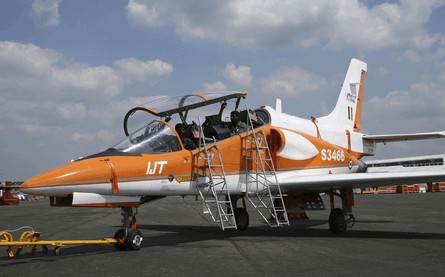India's aerospace group needs an export success to have a chance with private investors
Rising revenues and a monopoly over India's aerospace business have made state-owned Hindustan Aeronautics a big name in Asia, with the company aiming to become one of the top 25 defence firms in the world this year.
Financial results are certainly encouraging for HAL sales have doubled in three years to Rp83.5 billion ($2.09 billion) in the year to 31 March, when net profits rose 27% to Rp15 billion.
In addition, HAL became debt-free at the end of the year and chairman Ashok Baweja said last year that he expects turnover to reach $3 billion earlier than the target of 2011.
The Indian government has hinted that privatisation may be HAL's route to unlocking its true value. Last year, it granted HAL the prestigious "Navaratna" status that gives Indian state-owned companies greater autonomy and urged it to achieve "global benchmarks". Finance minister P Chidambaram says: "The market is the world, not just India."
Reality Check
The reality is that HAL, which falls under the defence ministry's purview, is a long way from achieving that goal. Its biggest challenge is its structure, say analysts. With 13 divisions covering most aspects of aerospace, as well as 16 production units and nine research and development centres spread across seven locations in India, this is an unwieldy beast.
"The financials may be improving, but HAL is still held back by the red tape and bureaucracy that is a feature of the Indian civil service. Some divisions can be merged and the operations can be streamlined. The government's mindset must change as well.
"HAL cannot be seen as just an arm of the defence ministry, but as a company that must compete globally," says a New Delhi-based source familiar with the company, who adds that uncompetitive salaries and an "old school" image have left HAL struggling to recruit top talent in India, which is increasingly drawn to the private sector.
HAL is addressing that problem it recently reviewed entry-level salaries and is about to launch a recruitment programme at the major Indian technology and engineering colleges.
It has had some success in licence production and earns most of its revenue from programmes such as the BAE Systems Hawk 132 advanced jet trainer, Sukhoi Su-30MKIs, Sepecat Jaguar, and Chetak and Chetan versions of the Aerospatiale Alouette III.
But a critical issue facing HAL is its dependence on Indian government contracts, with an observer in Bangalore pointing out that the company may go bankrupt if it relies on its indigenous programmes, which include the Dhruv Advanced Light Helicopter, Sitara intermediate jet trainer and much-delayed Tejas light combat aircraft.
 |
|---|
© Sharpshot |
With no export orders for the Dhruv, the company only manufactured six units last year and remains dependent on the Indian armed forces to keep the production line going.
"If the company is to become a serious player, it needs a successful export product. If the company is going to depend on the Dhruv for that, it would never be successful. The helicopter consistently falls short of expectations even in India, and HAL does not have a support network overseas," says the Bangalore-based observer.
There is, however, immense potential for growth in the civil aviation business. Boeing and HAL have signed an agreement to bring $1 billion of new manufacturing work to India over the next 10 years, while the company has also agreed to manufacture doors for Airbus aircraft and plans to convert passenger aircraft to cargo at a proposed maintenance, repair and overhaul joint venture with Boeing at Nagpur.
It is also investing Rp1 billion in an engine components manufacturing joint venture with Pratt & Whitney, and will supply fuselages for the Gulfstream G150 business jet. The company also owns the old Bangalore airport, which could be converted into a regional maintenance, repair and overhaul hub.
All of that points to some optimism for the future. "Yes, HAL's civil business is still small and its products are still struggling to make an impact internationally. But that also represents great potential for growth if the company gets its act together. Potential investors could like that," says the New Delhi-based source.
Source: Flight International
















